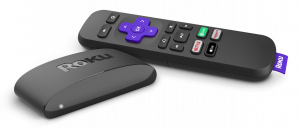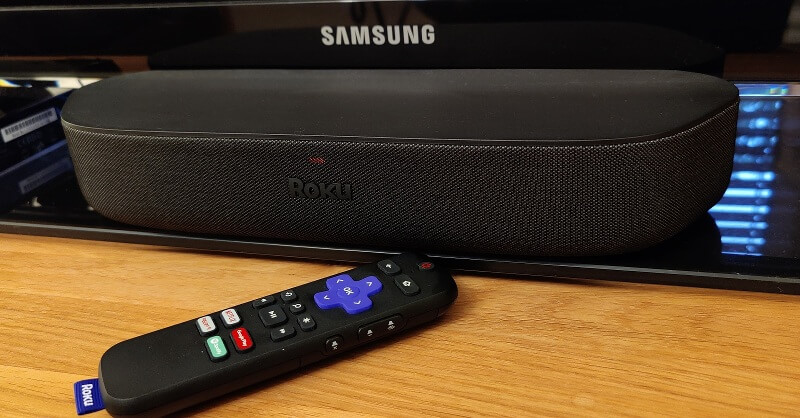 Here at Geek News Central, we’ve always been fans of Roku and with the latest pair of devices, I don’t see any reason to change my opinion. Roku continues to provide a convenient way to make older TVs smart and offer additional content that’s otherwise unavailable. It’s also a great solution if you are travelling and want to have access to streaming content without having to risk putting in your credentials into a hotel TV everywhere you are staying. Finally, a real bonus is the clean user interface that isn’t always trying to sell something.
Here at Geek News Central, we’ve always been fans of Roku and with the latest pair of devices, I don’t see any reason to change my opinion. Roku continues to provide a convenient way to make older TVs smart and offer additional content that’s otherwise unavailable. It’s also a great solution if you are travelling and want to have access to streaming content without having to risk putting in your credentials into a hotel TV everywhere you are staying. Finally, a real bonus is the clean user interface that isn’t always trying to sell something.
 The folks at Roku’s PR firm in UK kindly sent me one of the new Streaming Sticks for review, specifically the 3840EU. This is the HD model (in comparison with the 4K Streaming Stick Plus), which comes with an affordable RRP of £29.99. That’s £10 cheaper than the competing Amazon Fire TV Stick and there’s a similar price difference at the 4K level too. I’m going to be trying out the Streaming Stick with an old Samsung TV that doesn’t offer anything by way of apps or streaming services: showing photos from a DLNA server is about as sophisticated as this TV gets, so it’s an ideal candidate for a Roku upgrade.
The folks at Roku’s PR firm in UK kindly sent me one of the new Streaming Sticks for review, specifically the 3840EU. This is the HD model (in comparison with the 4K Streaming Stick Plus), which comes with an affordable RRP of £29.99. That’s £10 cheaper than the competing Amazon Fire TV Stick and there’s a similar price difference at the 4K level too. I’m going to be trying out the Streaming Stick with an old Samsung TV that doesn’t offer anything by way of apps or streaming services: showing photos from a DLNA server is about as sophisticated as this TV gets, so it’s an ideal candidate for a Roku upgrade.
The first thing to notice is that the box is much smaller than previous ones and appears to be all cardboard: this is a good thing saving both on trees and transportation costs. Inside an inner box, there’s the Roku Stick itself, a voice remote with batteries (yay!) and a 1.5m USB A to C (power) cable. There’s no power supply as the expectation is that you can run it from a USB socket on the TV or you’ll have a spare one lying around. There’s no HDMI cable either as obviously the Stick should plug straight into a socket but if there’s a problem with space or access, a free HDMI cable extender can be ordered. Nice touch.
 The remote itself is in the usual Roku-style with the purple four-way pad towards the top. It’s smaller than a normal TV remote and lower down there are shortcut buttons for Netflix, Disney+, Apple TV+ and Amazon Prime Video, with the volume controls on the right side. As this is a voice remote, there’s a mic button just below the four-way pad. During the initial configuration, the remote can be setup to control the TV’s volume and power.
The remote itself is in the usual Roku-style with the purple four-way pad towards the top. It’s smaller than a normal TV remote and lower down there are shortcut buttons for Netflix, Disney+, Apple TV+ and Amazon Prime Video, with the volume controls on the right side. As this is a voice remote, there’s a mic button just below the four-way pad. During the initial configuration, the remote can be setup to control the TV’s volume and power.
Getting the Roku up and running is straightforward though it takes a little time to run through everything. Physical installation is simply a case of plugging the Stick into a free HDMI socket and then powering it from a spare USB socket on the TV. My ancient Samsung had no problem providing enough juice. The cable is a decent 1.5m long which is great, though I’ll probably order a shorter cable for a tidier installation as my USB and HDMI are close together. Owners of previous generation Sticks will notice that while the device itself is the same size, there’s no need for the cable with the chunky in-line unit which tidies up the installation. Finally, pull the plastic tab out of the remote, turn on the TV and change over to the correct input, if it hasn’t done so automagically.
For now, it’s a case of following the prompts. The first step is to connect to the Wi-Fi and that can be a bit laborious if you have a long password. Fortunately, once you get past this bit, the voice features of the remote kick in and you can talk your way through subsequent screens. One thing I did notice was that the Stick doesn’t appear to pick up 5 GHz Wi-Fi signals in the higher bands around 150. If you are down in the usual 34 to 68 or even the low 100s, it seems to be fine.
If you have an existing Roku account you can login via your smartphone, give the Roku a name and location, and the install process will load existing apps (channels). If you don’t have a Roku account already, you’ll be prompted to create one. Finally you’ll be dropped into the Roku “Home” screen which has app tiles on the right and a short set of options on the left. Here you can use the four-way pad to choose what app you want to start, such as BBC iPlayer.
 The “What to Watch” area is largely what it says. Rather than promoting apps, this offers films and TV shows that might be of interest. If you’ve used any kind of streaming service before, you know the drill. You can also save content to watch later and if you have done that, the programme will be listed here. There is separate “Save List” top level menu as well that will take you to only your saved programmes. If you find the duplication annoying, the available menus can be edited in the “Settings” area.
The “What to Watch” area is largely what it says. Rather than promoting apps, this offers films and TV shows that might be of interest. If you’ve used any kind of streaming service before, you know the drill. You can also save content to watch later and if you have done that, the programme will be listed here. There is separate “Save List” top level menu as well that will take you to only your saved programmes. If you find the duplication annoying, the available menus can be edited in the “Settings” area.
Next is “Search” and this is by far one of Roku’s best features. Roku’s search covers almost anything you can think of to do with film and even better, it’s voice activated. Say “Scooby Doo” and it will show you all the Scooby Doo programmes it can find. Say “Cary Grant” and it will show films that are available through the apps featuring the suave actor. Say “Steven Spielberg” and it will offer films he directed. Jaws anyone? It’s really good and one of the best features.
“Streaming Store” is where you find the apps to install on your Roku so they’ll show up on the “Home” screen. For UK folk all the terrestrial broadcasters are here: BBC iPlayer, itvX, Channel 4, 5 plus the likes of Now and Sky Store, and then there’s all the big streaming services: Netflix, YouTube, Paramount+, Disney+, Apple TV+, Prime Video, Spotify.
And that’s before we start on the thousands of other more specialist or niche apps. There’s everything you can imagine from travel, fitness, games, news, religion, space, sport, weather….Some of it is really good. Some less so. Roku have their own channel too, which has a range of programming from TV series to films and sport. All the available apps and channels can be reviewed at Roku to see if there is something of interest
Finally, the “Settings” menu lets you change various elements of the Roku to your own taste, such as 12 or 24 hour team, or which menu items are shown. You get the idea.
 Three other points of note….first there is the truly awesome Roku City screensaver (and season variations) which is an homage to Hollywood with film Easter eggs galore. Avengers Tower – check. Ghostbusters fire station – check. Dr Who’s Tardis – check. It’s all there and if you are a film buff you’ll enjoy picking out the references. If it’s not setup by default, pop into the “Settings” and change the “Theme”.
Three other points of note….first there is the truly awesome Roku City screensaver (and season variations) which is an homage to Hollywood with film Easter eggs galore. Avengers Tower – check. Ghostbusters fire station – check. Dr Who’s Tardis – check. It’s all there and if you are a film buff you’ll enjoy picking out the references. If it’s not setup by default, pop into the “Settings” and change the “Theme”.
Second, Roku has a complementary app that kind of combines a remote with the “Home” screen, so you both launch apps directly or move round the screens and apps on the Roku itself. It’s pretty handy.
 Finally, it is possible to cast from a phone or tablet to the Roku so you can show off your photos. You can do it with AirPlay if you have an iPhone, but on Android you have to mirror your screen to the Roku which is a bit tricky as it’s done through Android Settings and isn’t terribly obvious. If I had one suggestion it would be to build the functionality into the Roku Android app so that it’s as easy to use as a Chromecast.
Finally, it is possible to cast from a phone or tablet to the Roku so you can show off your photos. You can do it with AirPlay if you have an iPhone, but on Android you have to mirror your screen to the Roku which is a bit tricky as it’s done through Android Settings and isn’t terribly obvious. If I had one suggestion it would be to build the functionality into the Roku Android app so that it’s as easy to use as a Chromecast.
As I said at the beginning the benefit of Roku is the simplicity of the user interface combined with the wide range of apps or channels at a good price. While the obvious use of a Roku is to update an older TV, it can still bring improvements to smart TVs through the extra apps. Roku isn’t tied to a vendor or ecosystem, so isn’t always trying to sell you something and at £29.99, this really is an easy purchase compared to the cost of a new TV.
The new Roku Streaming Stick and Streaming Stick Plus are available from today at Amazon and in-store at Asda. Coming soon to Argos as well.
The Roku Streaming Stick was provided for review by Roku at no cost.












